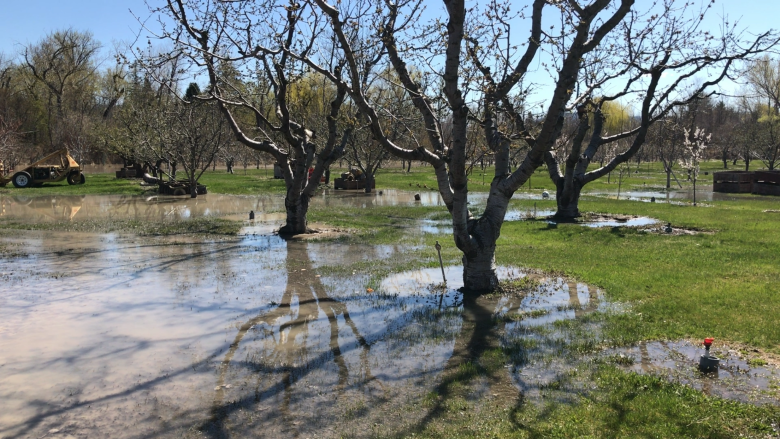B.C. hot spell brings potential river spills
A spell of warm weather in B.C.'s southern Interior this week could lead to flooding across parts of the region as snow-melt flows into river basins, according to B.C.'s River Forecast Centre.
Environment Canada is predicting temperatures in the low to mid-20s this week in the region, with a chance of rain during the weekend.
The warmer temperatures will ramp up snow-melt at lower to mid-elevations and cause increased flows in creeks and tributaries, said Dave Campbell, the head of the River Forecast Centre.
"That certainly has the potential to cause high flow conditions ... particularly in smaller tributary-type systems throughout the south Interior," he said.
The south Okanagan, which has already experienced flooding north of Oliver and in the community of Willowbrook, is a particular area of concern, he said.
There will also be higher flows in tributaries in the central and north Okanagan as well as in the Tulameen area of the Similkameen, the Cache Creek area and the Cariboo and Nicola regions.
"We are still very early in the freshet season," Campbell said.
Much of the Interior has a higher than normal snowpack this year. The Okanagan and Similkameen regions were measured at more than 150 percent of normal at the start of April.
"We've seen, over the last two or three weeks, ongoing snow accumulation," Campbell said.
"Probably an increase in the order of five to 15 per cent early this week, in comparison to April 1st."
Drawing down lakes
The province has been drawing down lakes in the Okanagan to absorb the influx of water this spring and summer.
Kalamalka Lake near Vernon is about 25 centimetres lower than it was at this time last year, according to Shaun Reimer who controls lake levels in the Interior.
"For Okanagan Lake, we actually are about 106 centimetres below our full pool range," Reimer said.
"That means we certainly have a decent amount of water that we can absorb into that system."
Last year, Okanagan Lake reached its highest ever recorded level and flooded into properties and communities up and down the Okanagan.
As of this week, the lake is 61 centimetres lower than it was in 2017, Reimer said.



